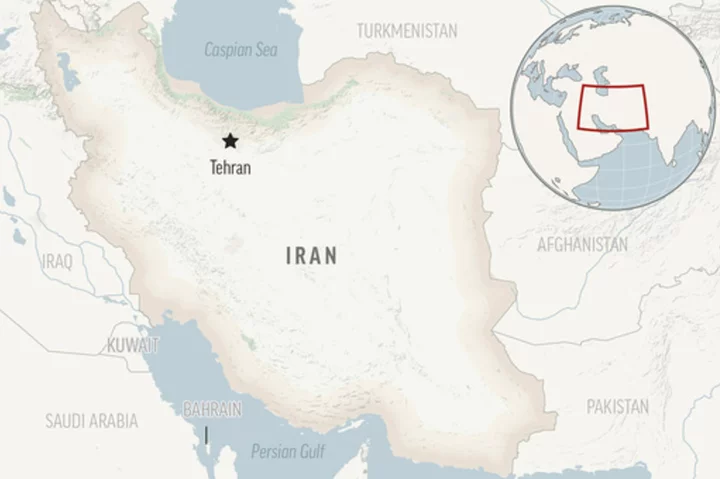DUBAI, United Arab Emirates (AP) — Iran claimed on Wednesday that it successfully launched an imaging satellite into space, a move that could further ratchet up tensions with Western nations that fear its space technology could be used to develop nuclear weapons.
Iran's Communication Minister Isa Zarepour said the Noor-3 satellite had been put in an orbit 450 kilometers (280 miles) above the Earth's surface, the state-run IRNA news agency reported. It was not clear when exactly the launch took place.
There was no immediate acknowledgment from Western officials of the launch or of the satellite being put into orbit. The U.S. military did not immediately respond to a request for comment. Iran has had a series of failed launches in recent years.
Zarepour said the aerospace arm of Iran's paramilitary Revolutionary Guard, which has had success in launching satellites in the past, had carried out the most recent launch.
Authorities released footage of a rocket taking off from a mobile launcher without saying where the launch occurred. Details in the video corresponded with a Guard base near Shahroud, some 330 kilometers (205 miles) northeast of the capital, Tehran. The base is in Semnan province, which hosts the Imam Khomeini Spaceport from which Iran’s civilian space program operates.
The Guard operates its own space program and military infrastructure parallel to Iran’s regular armed forces and answers only to Supreme Leader Ayatollah Ali Khamenei.
It launched its first satellite into space in April 2020. But the head of the U.S. Space Command later dismissed it as a “tumbling webcam in space” that would not provide vital intelligence. Western sanctions bar Iran from importing advanced spying technology.
The United States has alleged that Iran’s satellite launches defy a U.N. Security Council resolution and has called on Tehran to undertake no activity related to ballistic missiles capable of delivering nuclear weapons.
The U.S. intelligence community’s 2022 threat assessment claims the development of satellite launch vehicles “shortens the timeline” for Iran to develop an intercontinental ballistic missile because it uses similar technology.
Iran has always denied seeking nuclear weapons, and says its space program, like its nuclear activities, is for purely civilian purposes. U.S. intelligence agencies and the International Atomic Energy Agency say Iran abandoned an organized military nuclear program in 2003.
Over the past decade, Iran has sent several short-lived satellites into orbit and in 2013 launched a monkey into space. The program has seen recent troubles, however. There have been five failed launches in a row for the Simorgh program, another satellite-carrying rocket.
A fire at the Imam Khomeini Spaceport in February 2019 killed three researchers, authorities said at the time. A launchpad rocket explosion later that year drew the attention of then-President Donald Trump.
Tensions are already high with Western nations over Iran's nuclear program, which has steadily advanced since Trump five years ago withdrew the U.S. from the 2015 nuclear agreement with world powers and restored crippling sanctions on Iran.
Efforts to revive the agreement reached an impasse more than a year ago. Since then, the IAEA has said Iran has enough uranium enriched to near-weapons grade levels to build “several” nuclear weapons if it chooses to do so. Iran is also building a new underground nuclear facility that would likely be impervious to U.S. or Israeli airstrikes. Both countries have said they would take military action if necessary to prevent Iran from developing a nuclear weapon.
Iran has expressed willingness to return to the 2015 nuclear deal, but says the U.S. should first ease the sanctions.









